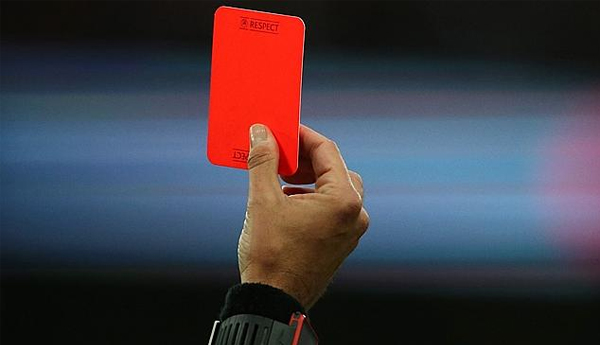Cricket to Introduce Red Cards to Police Players’ Behavior
Cricket plans to introduce red cards to curb aggression and police bad behavior in matches, a watershed moment for a sport that has traditionally considered its spirit and camaraderie sufficient to prevent such problems, and one that until now has avoided any form of in-game punishment.
Starting in October, however, cricket will give umpires the power to send off players for aggressive or threatening actions on the field of play.
The significant change to the laws, advocated by the Marylebone Cricket Club World Cricket committee — an independent body affiliated with the M.C.C., which controls the laws of cricket — is a belated recognition that the sport is not immune to bad on-field behavior. The amateur game is of particular concern, with numerous nations worrying about a rise in aggression toward opponents and umpires in recent years.
“It has got completely out of hand down there,” Ricky Ponting, a former Australia captain who sits on the cricket club committee, said at the announcement on Wednesday. “We have got to the stage that something had to be done to prevent these things happening.”
The rise in aggressive behavior on the field has led to particular concerns about a potential dearth of umpires in club matches. A recent study, conducted by Portsmouth University, found that 40 percent of British umpires were considering giving up refereeing because of verbal abuse.
As the club noted, cricket is the rare sport that has no immediate in-game punishments. Even for the worst behavior on the field, the only penalties that can currently be issued are fines or suspensions from future matches.
“Taking an extreme example,” the Marylebone Cricket Club said, “a batsman could willfully hit a member of the fielding side with their bat before carrying on to score a century to win the match for their team.”
In a famous incident in 1981, the Australian fast bowler Dennis Lillee confronted the Pakistani batsman Javed Miandad, who subsequently lifted his bat as if to strike Lillee, before the umpire intervened and separated the men. Both players subsequently remained on the field.
There have been other notorious episodes that did not lead to immediate punishment. In 1980, the West Indies fast bowler Michael Holding kicked down the stumps, the vertical posts that support the bails and form the wicket, to protest an umpire’s decision. In 1997, Inzamam-ul-Haq, a Pakistani batsman, jumped into the crowd to confront an Indian spectator who was heckling him, and he had to be held back when he raised a bat above his head.
So while cricket has always considered itself a sport with a unique code of conduct — the preamble to the laws of the game refers to the “spirit of cricket” — this has often been a myth when it comes to player behavior and other areas. There are records of gambling on cricket from the 17th century, as well as accusations of match fixing.
The introduction of the red card in cricket is expected to be ratified by the main M.C.C. committee in February. Unless the sport’s governing body, the International Cricket Council, exempts its matches from the change — which is highly unlikely because it was consulted before the M.C.C. announced its changes this week — red cards would then be incorporated into laws for all international matches. National leagues also might be allowed to introduce smaller penalties, like yellow cards, for lesser incidents of bad behavior.
Courtesy : nytimes



